French doors are a popular choice for many homeowners due to their elegant design and ability to let in natural light. However, keeping them securely closed can sometimes be a challenge. Whether you are looking to enhance security, improve insulation, or simply ensure that your doors stay shut, it’s important to understand the various solutions available.
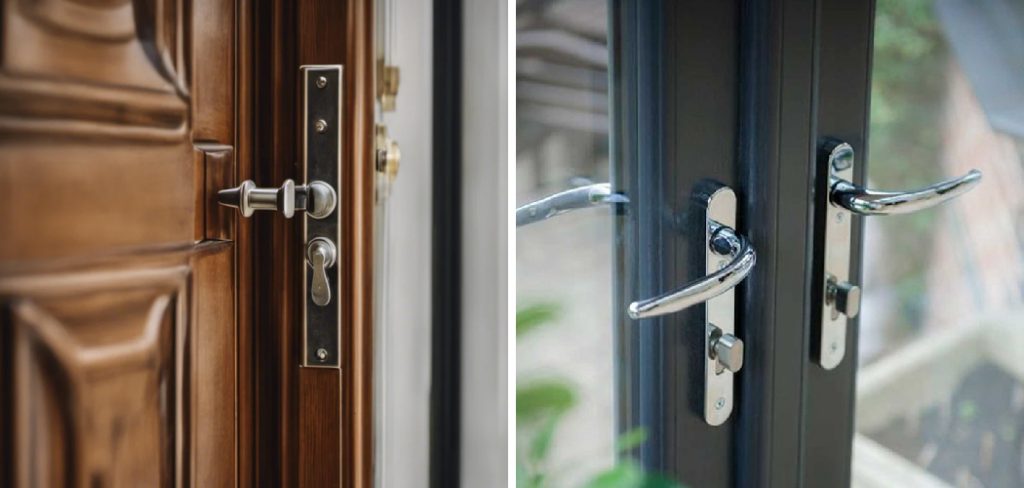
In this guide on how to keep french doors closed, we will explore different techniques and hardware options to help you keep your French doors closed effectively and efficiently.
Why is it important to keep French doors closed?
French doors are typically used as exterior doors that lead to a patio, garden, or balcony. Keeping them closed can help prevent unwanted entry from intruders, protect your home from harsh weather conditions, and maintain energy efficiency by preventing air leakage.
Moreover, if you have pets or small children in the house, keeping French doors shut can also serve as a safety measure to ensure they do not wander outside unsupervised.
Now that we understand the importance of keeping French doors closed let’s explore some ways to achieve this.
Needed Materials
Before getting started, here are some materials you may need to keep your French doors closed:
Door Handles or Knobs With a Locking Mechanism:
If your French doors do not come with built-in locks, you can consider installing door handles or knobs with a locking mechanism. These are relatively easy to install and can provide a quick solution to keep your doors closed.
Deadbolt Locks:
Deadbolt locks are another popular option for securing French doors. They provide an extra layer of security as they require a key or code to unlock them, making it harder for intruders to gain entry. Deadbolts come in various styles, such as single or double cylinder, and can be installed on the top or bottom of your door.
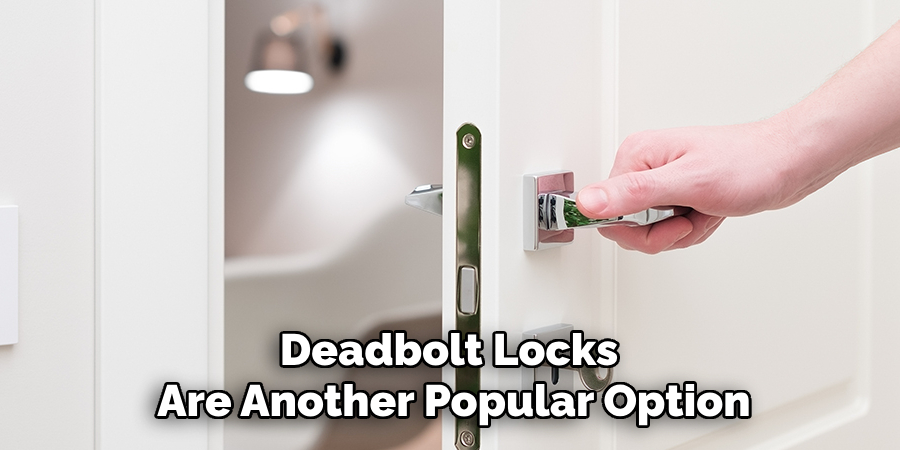
Door Bolts:
Door bolts are a simple but effective solution for keeping French doors closed. They are typically mounted on the top or bottom of one of the doors and slide into a metal plate attached to the other door when locked. This prevents the doors from swinging open, even if they are not securely latched.
Magnetic Door Stops:
Magnetic door stops are a discreet option for keeping French doors closed. They use strong magnets to hold the doors together when not in use, making them a great choice for doors that are frequently opened and closed. These can also be used in conjunction with other locking mechanisms for added security.
8 Step-by-step Guidelines on How to Keep French Doors Closed
Step 1: Identify the Type of French Doors
The first step in keeping your French doors closed is to understand their design and operation. French doors can have various types of hardware, such as handles, locks, and hinges. Knowing the type of door you have will help you determine the best methods for keeping them closed.
You can also consider consulting the manufacturer’s guide or a professional for specific instructions on how to keep your French doors closed. It is essential to follow the guidelines provided by the manufacturer to avoid any damage or malfunctions.
Step 2: Check for Any Damage or Misalignment
Before proceeding with any locking solutions, it is crucial to ensure that your French doors are in good condition. Inspect the doors and hardware for any damage, wear and tear, or misalignments that could prevent them from closing properly.
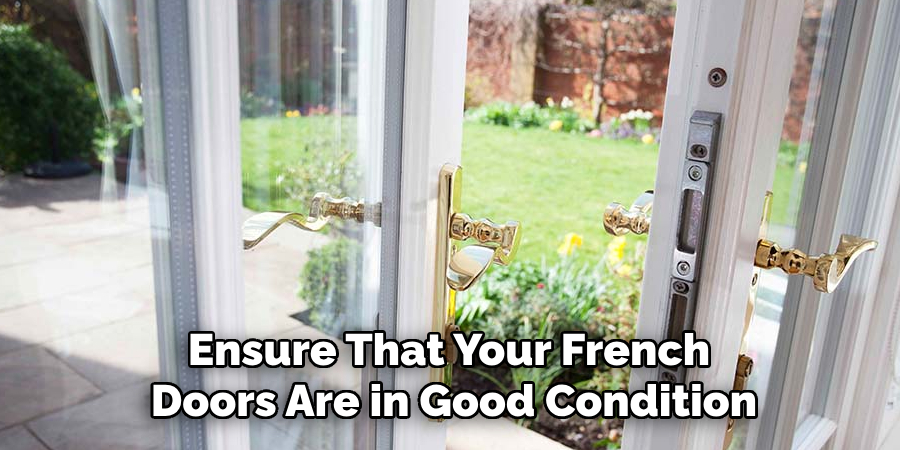
If you notice any issues, such as loose hinges or damaged latches, consider repairing or replacing them before attempting to keep your French doors closed.
Step 3: Install Door Handles or Knobs With a Locking Mechanism
As mentioned earlier, door handles or knobs with a locking mechanism can be an easy solution for keeping French doors closed. They are available in various styles and can be found at most hardware stores.
To install them, simply follow the instructions provided by the manufacturer or hire a professional if needed. Make sure to choose a high-quality lock for added security.
Step 4: Add Deadbolt Locks
If you want an extra layer of security for your French doors, consider installing deadbolt locks. As mentioned earlier, these come in different types and can be mounted on the top or bottom of your door.
Before installing a deadbolt lock, make sure to measure and mark the location accurately. Use a drill to create the necessary holes, and follow the instructions provided to secure the lock in place.
Step 5: Install Door Bolts
Door bolts are a relatively simple solution for keeping French doors closed. They can be mounted on the top or bottom of one of your doors and require minimal installation.
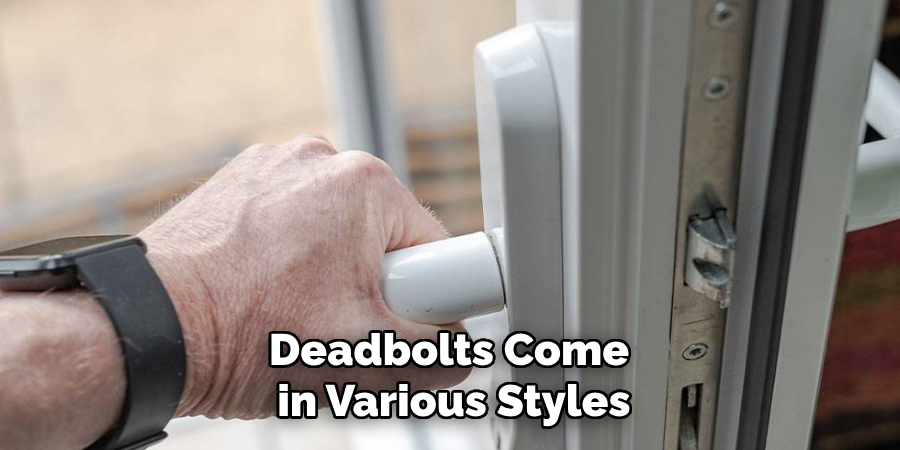
To install door bolts, begin by marking the location where you want to attach them. Drill pilot holes and then screw them into place. Make sure to leave enough slack so that the bolt can slide easily into the metal plate attached to your other door.
Step 6: Consider Using Magnetic Door Stops
If you prefer a more discreet option for keeping French doors closed, magnetic door stops may be the solution for you. They can easily attach to the top or bottom of your door using screws and can be adjusted to hold the doors at different angles.
To install magnetic door stops, simply drill pilot holes into your door and screw them in place. Make sure to test them out before relying on them as a locking mechanism.
Step 7: Use Door Stops or Wedges
For a temporary solution, you can also use door stops or wedges to keep your French doors closed. These are typically placed between the two doors when they are closed, which prevents them from swinging open.
Door stops or wedges can be found at most hardware stores and are easy to use. However, they may not provide as much security as other locking solutions.
Step 8: Regular Maintenance and Check-Ups
To ensure that your French doors remain closed effectively, it is essential to perform regular maintenance and check-ups. This includes inspecting the doors and hardware for any damage, cleaning and lubricating hinges and locks, and making any necessary repairs or adjustments.
By following these simple guidelines on how to keep french doors closed, you can keep your French doors closed securely while also enjoying their beauty and functionality. Remember to choose high-quality locking mechanisms and regularly maintain them for optimal performance. So, keep your French doors closed with these easy steps and enjoy the added security and peace of mind they provide.
Frequently Asked Questions
Q: Can I Use Regular Door Locks on French Doors?
A: Yes, you can use regular door locks on French doors, but it is recommended to use locks specifically designed for French doors for better functionality and security. The best option is to consult the manufacturer’s instructions or seek professional advice.
Q: Can I Install Locks Myself or Should I Hire a Professional?
A: It is possible to install locks on your French doors yourself, but it is recommended to hire a professional, especially if you are not familiar with the process or do not have the necessary tools. A professional can also ensure that the locks are installed correctly and provide proper guidance on maintenance.
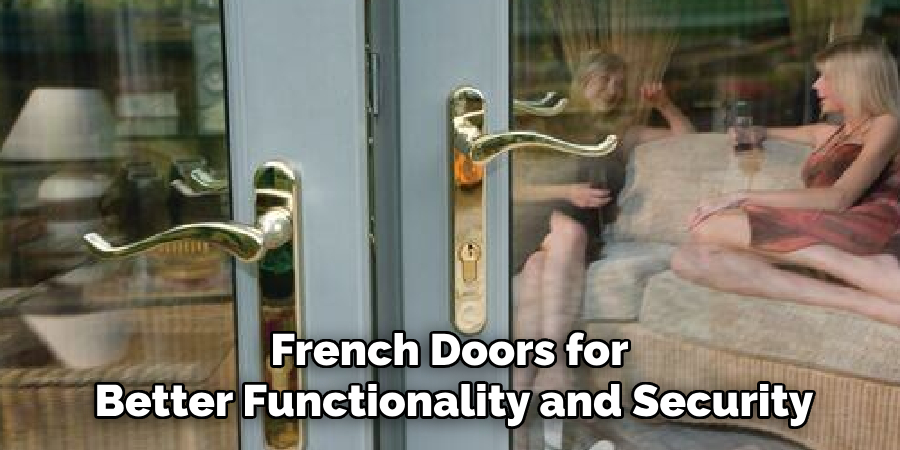
Q: What Is the Best Way to Keep French Doors Closed When Not in Use?
A: The best way to keep French doors closed when not in use depends on personal preference and the type of doors you have. Some options include using door handles or knobs with a locking mechanism, deadbolt locks, door bolts, magnetic door stops, or wedges. Regular maintenance and check-ups are also essential for keeping French doors closed effectively.
Q: How Do I Know if My French Doors Need Repairs?
A: Signs that your French doors may need repairs include difficulty closing or latching, gaps between the two doors when closed, loose hinges or hardware, and unusual noises when opening or closing the doors. If you notice any of these issues, it is recommended to consult a professional for proper evaluation and repairs. So, it is important to pay attention to these signs and address any potential issues promptly to keep your French doors functioning properly.
Conclusion
In conclusion, keeping your French doors securely closed while maintaining their elegance and functionality requires a combination of the right locking mechanisms and regular maintenance. By thoroughly inspecting your doors and addressing any issues before proceeding with locking solutions, you ensure their optimal performance.
Whether you choose door handles with locking mechanisms, deadbolt locks, door bolts, magnetic door stops, or simple wedges, it’s crucial to select high-quality products and seek professional assistance if needed. Regular check-ups and upkeep are essential to preserve the integrity of the doors and their locking systems.
By following these steps on how to keep french doors closed, you can enjoy the beauty and security that French doors offer, bringing both aesthetic appeal and peace of mind to your home.
About
Safety Fic is a distinguished figure in the world of Diy design, with a decade of expertise creating innovative and sustainable Diy solutions. His professional focus lies in merging traditional craftsmanship with modern manufacturing techniques, fostering designs that are both practical and environmentally conscious. As the author of diy, Safety Fic delves into the art and science of Safety Fic-making, inspiring artisans and industry professionals alike.
Education RMIT University
(Melbourne, Australia) Associate Degree in Design (Safety Fic) Focus on sustainable design, industry-driven projects, and practical craftsmanship. Gained hands-on experience with traditional and digital manufacturing tools, such as CAD and CNC software.
Nottingham Trent University
(United Kingdom) Bachelor’s in diyfastly.com and Product Design (Honors) Specialized in product design with a focus on blending creativity with production techniques. Participated in industry projects, working with companies like John Lewis and Vitsoe to gain real-world insights.
Publications and Impact
In diy, Safety Fic his insights on indoor design processes, materials, and strategies for efficient production. His writing bridges the gap between artisan knowledge and modern industry needs, making it a must-read for both budding designers and seasoned professionals.
